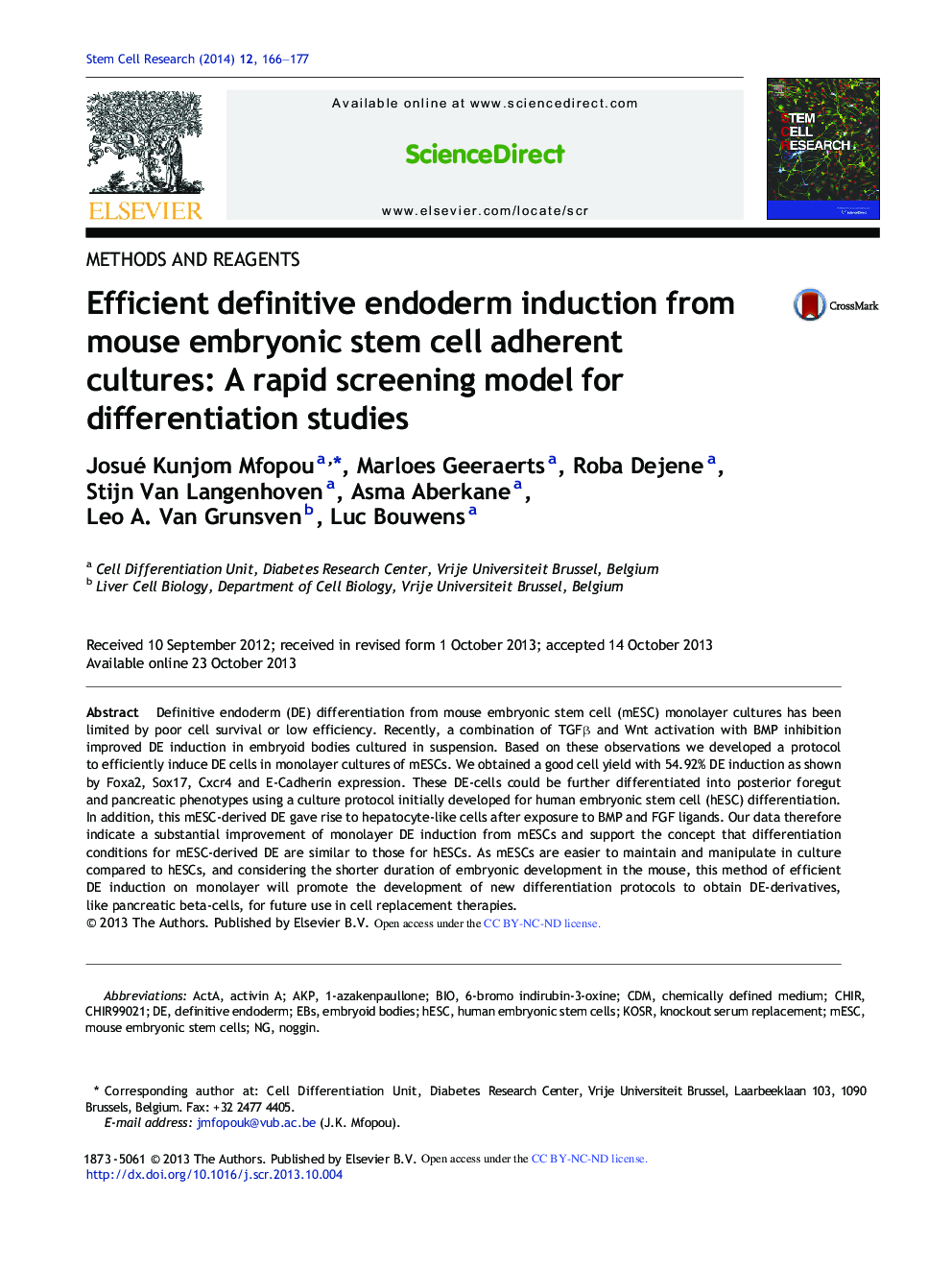| Article ID | Journal | Published Year | Pages | File Type |
|---|---|---|---|---|
| 2094601 | Stem Cell Research | 2014 | 12 Pages |
•An improved method for deriving DE cells from mESCs on monolayer is presented•Differentiation yields 54% DE cells expressing Foxa2, Sox17, Cxcr4, E-Cadherin•The method involves TGFb and Wnt activation, combined with BMP inhibition•Pdx1 + Nkx6.1 + pancreatic progenitors and Alb+ hepatoblasts were successfully derived•The method is an easy and rapid screening tool for further differentiation studies.
Definitive endoderm (DE) differentiation from mouse embryonic stem cell (mESC) monolayer cultures has been limited by poor cell survival or low efficiency. Recently, a combination of TGFβ and Wnt activation with BMP inhibition improved DE induction in embryoid bodies cultured in suspension. Based on these observations we developed a protocol to efficiently induce DE cells in monolayer cultures of mESCs. We obtained a good cell yield with 54.92% DE induction as shown by Foxa2, Sox17, Cxcr4 and E-Cadherin expression. These DE-cells could be further differentiated into posterior foregut and pancreatic phenotypes using a culture protocol initially developed for human embryonic stem cell (hESC) differentiation. In addition, this mESC-derived DE gave rise to hepatocyte-like cells after exposure to BMP and FGF ligands. Our data therefore indicate a substantial improvement of monolayer DE induction from mESCs and support the concept that differentiation conditions for mESC-derived DE are similar to those for hESCs. As mESCs are easier to maintain and manipulate in culture compared to hESCs, and considering the shorter duration of embryonic development in the mouse, this method of efficient DE induction on monolayer will promote the development of new differentiation protocols to obtain DE-derivatives, like pancreatic beta-cells, for future use in cell replacement therapies.
